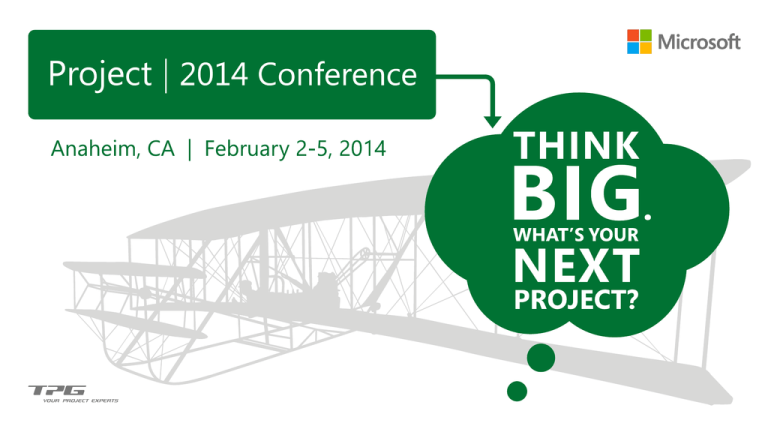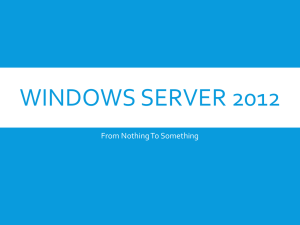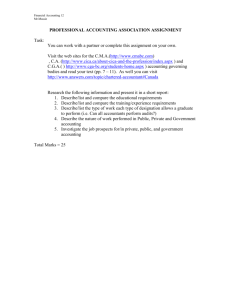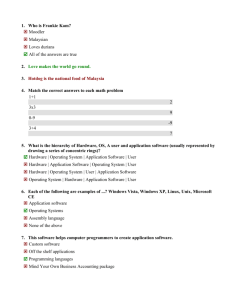Project Worst Practice - Learning from other peoples mistakes
advertisement

blogs.msdn.com/brismith ppmblog.org http://technet.microsoft.com/en-us/library/cc973097.aspx http://technet.microsoft.com/en-us/library/ee662107(v=office.14).aspx • Why does it happen? • What can we do? • A bit like bookshelves… http://www.bing.com/search?q=Best+Practices+on+timesheet+management+on+Project+Plans&qs=n&form=QBRE&pq=best+ practices+on+timesheet+management+on+project+plans&sc=0-4&sp=-1&sk=&cvid=22329eb211fc4161befd0ed65e96c9c3 http://office.microsoft.com/en-us/project-server-help/best-practices-for-submitting-and-reporting-on-actual-workHA102821971.aspx My server is slow Do you have lots of custom fields Yes Do you need them all? Yes No Yes Perhaps you DB needs some maintenance? Still slow? http://technet.microsoft.com/en-US/library/hh694531(v=office.14).aspx Spend the same budget on UI as done with BI Don’t make the client behave more complex than needed Program Managers think they need a master project QUICK DEMO http://ppmblog.org/2013/05/15/project-online-and-odata-refresh-performance/ The RBS structure is often used to map competencies Projectum Denmark Consulting http://www.projectserverexperts.com/ProjectServerFAQKnowled geBase/rbsprimer.aspx Development Sweden Consulting Development The business doesn’t know what they are http://blogs.msdn.com/b/brismith/archive/2012/11/12/project-server-2013requirements-to-build-an-olap-cube.aspx http://technet.microsoft.com/en-us/library/ff465339.aspx Due to bad laptop specifications http://technet.microsoft.com/en-us/library/ee624351.aspx Due to not knowing about custom field limitations SEE NEXT SLIDE http://ppmblog.org/2012/10/31/project-server-2013-choosing-a-farm-versuslimitations/ Entity Small Medium Large Projects 20 100 5000 Project Sites 20 100 5000 % Projects in Managed Mode 0% 10% 80% Tasks 1250 25000 1250000 Average Tasks Per Project 62.5 250 250 Entity Description Small Medium Large Task Transaction History 10 10 100 1 Projects 5000 20000 Assignments 1625 32500 1625000 856250 3425000 Average Assignments Per Task 1.3 1.3 1.3 Average Tasks per My Site User 50 250 5000 Approvals 5 50 600 Resources 50 1000 10000 Average Resources Per Project 2.5 10 2 100 1 Tasks 17125 1 Average Tasks Per 171.25 Project 171.25 171.25 2 Task Transaction History 100 1000 10 1 Assignments 22263 1113125 4500000 Average Assignments Per Resource 32.5 32.5 162.5 1 Average Assignments Per Task 1.3 1.3 1.3 Users 50 1000 10000 Calendars 3 26 100 Approvals 50 600 3000 Issues Risks 20 20 400 400 20000 20000 Users 1000 10000 50000 Deliverables 20 2/3 Custom Fields Project (Formula) 3 20 25 Custom Fields Project (Manual) 2 40 50 Custom Fields Task (Formula) 6 12 15 800 40000 Enterprise Project Types 5 50 Workflows 2 30 Average Projects Per Workflow 50 167 Phases 5 50 Phases Per Enterprise Project Type 20 20 Stages 15 150 Custom Fields Task (Manual) 4 8 10 Stages Per Workflow 20 40 Custom Fields Assignment Rolldown 50% 50% 50% PDPs 10 100 Custom Fields Resource 10 20 25 Custom Fields Per PDP 10 10 Custom Fields Look up Table Custom Fields 2 15 100 Number of Departments 100 1 Timesheets (per year) 52000 780000 8,320,000 Average Projects Per Department 50 Average Resources Per Department 100 1 Timesheet Lines 5 10 10 Timesheets Per Year Status Reports Per Year 2600 52000 780000 26000 260000 Its almost all times due to not using “views” http://blogs.technet.com/b/brookswhite/archive/2011/12/13/how-to-create-custom-views-in-projectprofessional-2007.aspx The symptom's: PPM deployment projects suffer some of the poorest Project Charters and resource allocation The effect: Leads to confusion, lack of a clear set of goals and often poor technology choices. Focus often shifts to minor issues with a loss of sight to the big issues The symptom's: Other key stakeholders are not engaged The effect: Frustration and turf wars and often loss of access the skilled people who could add leverage to a successful deployment The symptom's: Focus is often on delivery dates without the corresponding functional mapping completed The effect: Morale can be impacted as the realisation of an inability to complete on time becomes clear, often bad news is held back to avoid confrontation The symptom's: Six months into a operational system, performance, functionality, reporting or integration become troublesome The effect: The system needs to be rebuilt, frustration builds up and blame gets thrown around when The symptom's: Colleagues are not adopting the new environment, old habits (Excel, free-standing plans) are re-emerging The effect: The new systems lose accuracy, management lose faith, even ‘good’ citizens revert to the old ways The symptom's: Unexpected problems arise such as not meeting management reporting needs, integration with systems that weren’t foreseen The effect: Additional cost to transform the system to allow for integration, unhappy management who thought ‘they could get anything reports’ they wanted. The symptom's: Different departments demand incompatible structures, deployment decision are not consistent with any structured pland The effect: Deadlines are not met, unnecessary complexities creep into the PPM environment, it all turn a bit ‘ugly’ The symptom's: Six(?) months after an adoption decision has been taken little or no progress is visible The effect: IT can be reticent in bringing in Process, Technical and other external SME’s, losing impetus and frustrating the business. MyPC fill out evaluations & win prizes! www.msprojectconference.com







